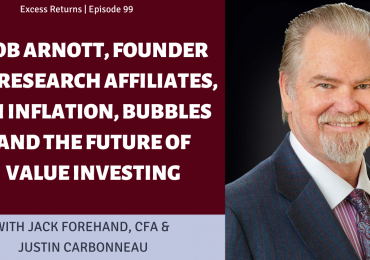Although asset bubbles have ballooned and popped again and again throughout history, each bubble has unique qualities, and the crypto bubble is no different, contends an article in Enterprising Investor. There are six stages to the life of a bubble, which the article breaks down:
Stage One: New technology with the potential to cause a major shift in society emerges. But mass market appeal can make a bubble’s moment hard to pinpoint, because the naysayers are often drowned out by enthusiasts. In the case of crypto, adherents believe that it will herald “a new decentralized, unregulated financial system”—but the regulations set up by central banks are there to protect consumers against the “dangers of a decentralized, unregulated financial system.”
Stage Two: Those who get in on the ground floor make an enormous amount of money, attracting more and more investors who don’t realize that those early successes had more to do with luck than skill.
Stage Three: The bubble is inflated by investors driven by FOMO, and the influx of capital drives prices to be wildly overvalued. Investors tend to throw out tried-and-true investment principles as they buy into the hype, such as crypto exchanges not needing the protections put in place by “a well-regulated banking system that were designed to prevent the very abuses in which they engage.”
Stage Four: Money supply gets tighter, as central banks begin to reign in their policies in the face of elevated asset values and rising inflation. If central banks hold off on intervening, the madness will continue unchecked until it crashes down hard. This is what happened in the mid-1800s and resulted in the “Hard Times,” stories of which recount an awful period.
Stage Five: Investors begin to panic sell, to the point where sellers outnumber buyers. Prices plummet as the asset loses its original lustre and investors realize the technology isn’t as valuable as they once thought.
Stage Six: After being burned by their failed investment, investors vow to not make the same mistake twice…only to be taken in once again a decade or so later. Case in point: Michael Saylor, who got swept up in both the dot-com and crypto bubbles, 21 years apart.
But the article also details four steps investors can take to protect themselves against the next bubble. First, be patient. The most legendary investors—like Warren Buffett—practice incredible patience, committing to the long haul rather than chasing trends. Successful investing is much more boring than hitting a jackpot again and again, and “there are more dead-ends in investing than there are shortcuts,” the article reminds us. Second, get comfortable with being lonely; while everyone else is giving into their FOMO and diving into the frenzy, be prepared to sit on the sidelines and stick to your guns. Third, learn from those who have successfully avoided bubbles, such as Buffett and his business partner, Charlie Munger. While they may have missed out on a few opportunities, that hasn’t detracted from their success at all. If someone like Buffett calls crypto “a delusion that attracts charlatans,” pay attention. Last, look back at the past. Nearly every bubble has a historical parallel, and learning from history could prevent you from being doomed to repeat it.




